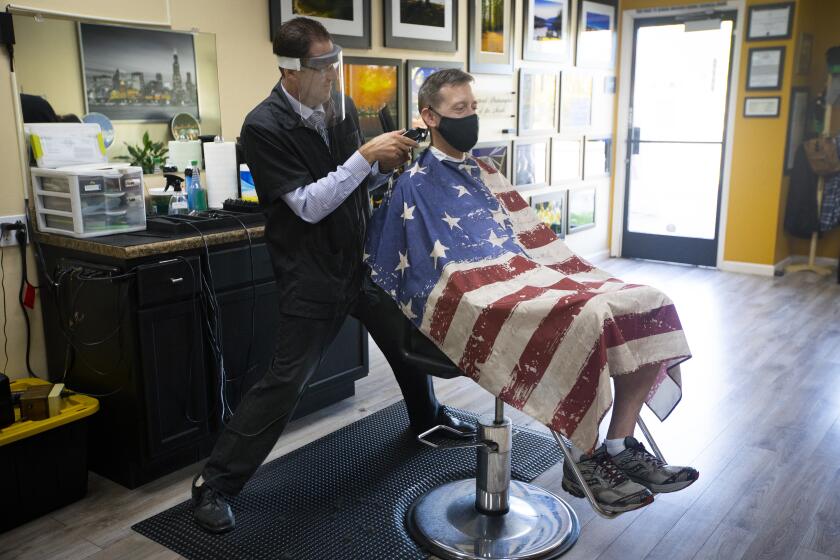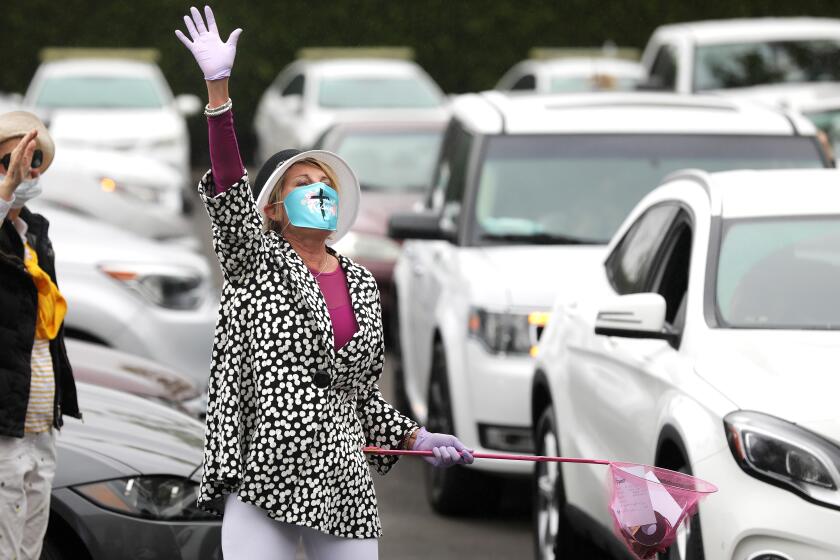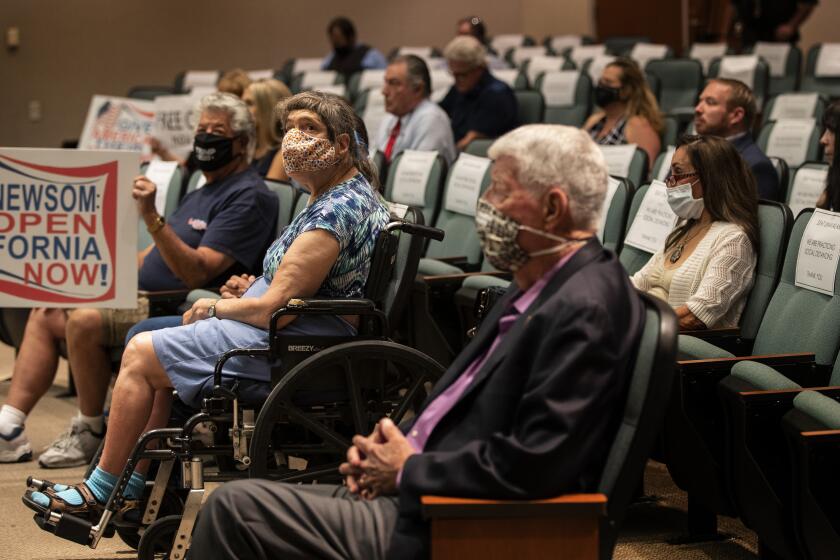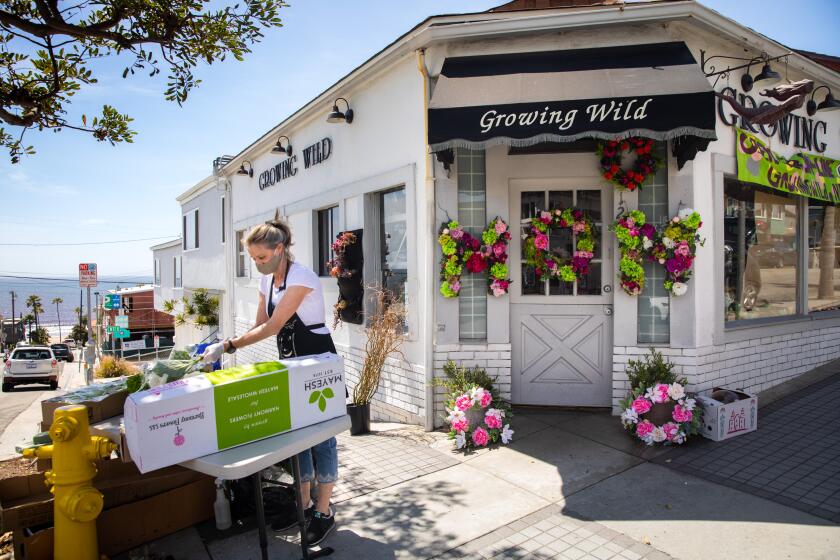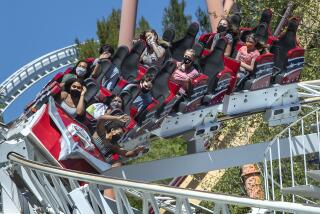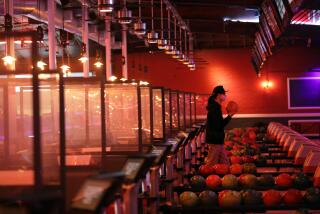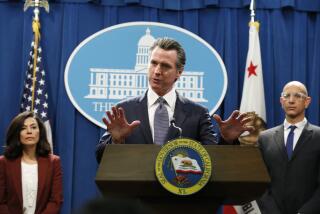California is reopening too quickly, posing ‘very serious risk,’ health officer warns
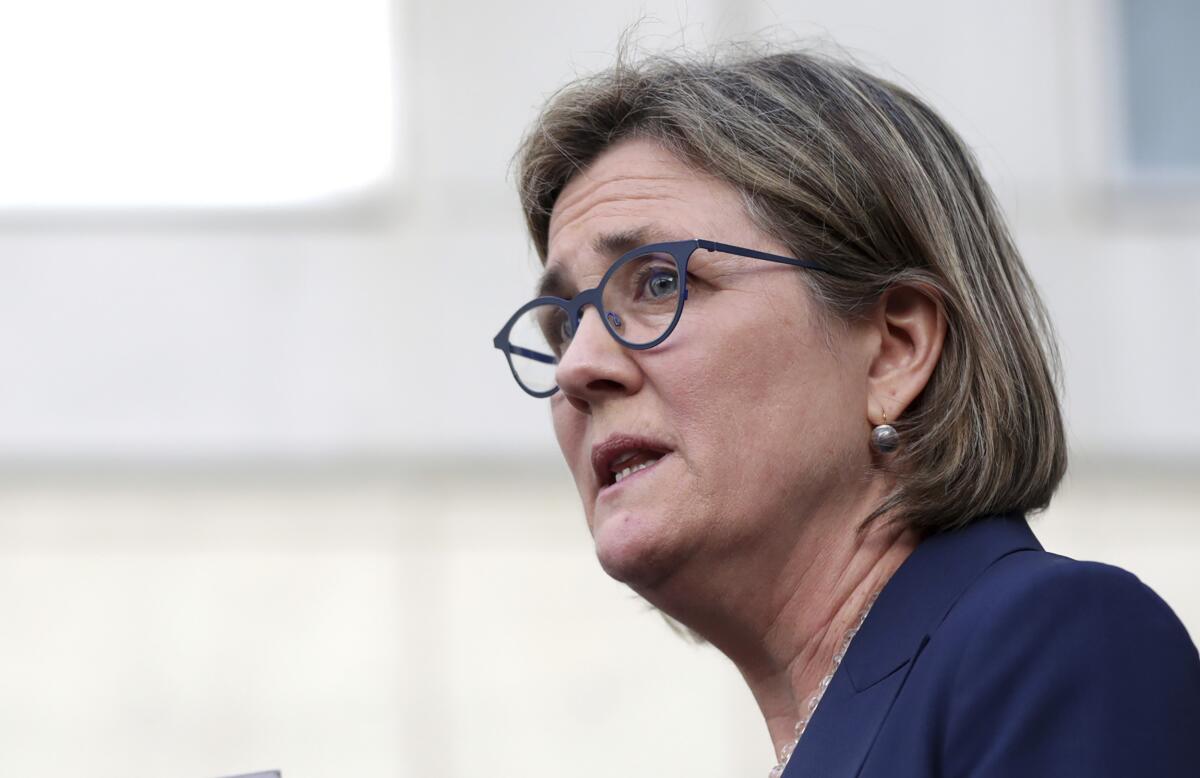
SAN FRANCISCO — A key architect of the nation’s first coronavirus shelter-in-place order is criticizing California’s increasingly fast pace of lifting stay-at-home restrictions.
In particular, Dr. Sara Cody, health officer for Santa Clara County — home to Silicon Valley and Northern California’s most populous county — said she was concerned by the decision to allow gatherings of up to 100 people for religious, political and cultural reasons.
“This announcement to authorize county health officers to allow religious, cultural and political gatherings of 100 people poses a very serious risk of the spread of COVID-19,” Cody told the Santa Clara County Board of Supervisors on Tuesday.
Visual look at the third phase to reopen California amid the coronavirus outbreak.
Even if just one infected person showed up to such an event, the virus could easily be transmitted to many people and overwhelm local health officials’ ability to investigate all related cases, she warned.
Cody has been credited with helping to spearhead the San Francisco Bay Area’s regional shelter-in-place order. Issued March 16, the mandate that affected 6.6 million people in six counties initially stunned the nation. But it quickly became a model for the rest of California and other states, with Gov. Gavin Newsom enacting a statewide stay-at-home order March 19 and New York state following suit three days later.
Santa Clara County, with a population of 1.9 million people, is not required to relax its order — among the strictest in California — to the state standard. When local and state orders differ, the stricter standard applies. But Cody expressed concerns that California risks a surge in cases if it reopens too many sectors of society too quickly.
Since early May, “the state has shifted away from the stay-at-home model and has made significant modifications with increasing frequency,” Cody said. “The pace at which the state has made these modifications is concerning to me.”
Gov. Newsom said California barbershops, hair salons, nail salons and other grooming services could reopen under Stage 3 of his reopening plan.
Cody said it’s important to wait at least 14 days — the time it can take for an infected person to show symptoms — after easing restrictions to see what effects the relaxed policy has on increased coronavirus illnesses. It would be even better to wait 21 days, she added.
Reopening so fast, she said, means there isn’t enough time to implement new procedures to make reopened activities safe.
Within hours of Newsom’s announcement Tuesday allowing counties to reopen hair salons and barbershops, some stylists already had customers in their chairs.
“Making changes too frequently leaves us blind. We can’t see the effect of what we just did,” Cody said. “Our social and economic well-being are best served by a more phased approach that allows activities to resume in a manner that allows people to actually be relatively safe while engaging in the newly open activity.”
Experts say the Bay Area’s early action dramatically slowed the spread of the highly infectious coronavirus in the region, which had been one of the nation’s earliest hot spots of the virus.
As of Tuesday night, the six Bay Area counties had reported a coronavirus death rate of six fatalities per 100,000 residents; Los Angeles County has a death rate of 21 fatalities per 100,000 residents. Statewide, California has a death rate of about 10 fatalities per 100,000 residents. Across the nation, New Jersey’s rate is 126 fatalities per 100,000 residents, while New York’s is 149 fatalities per 100,000 residents.
The latest rules issued by the California Department of Public Health this week say churches that choose to reopen and in-person political protests must limit attendance to 25% of building capacity or a maximum of 100 attendees, whichever is lower.
New Jersey, by contrast, limits such gatherings to 25 people, and New York, 10, Cody said.
Newsom said Tuesday that he understood he would be criticized in deciding to allow religious gatherings to resume on a restricted basis.
“I know some people think that’s too much too fast too soon. Others think, frankly, that it didn’t go far enough,” the governor said. “But suffice it to say, at a statewide level, we now are affording this opportunity again with a deep realization of the fact that people will start to mix … and that is incumbent upon us to practice that physical distancing within these places of worship.”
The Board of Supervisors unanimously approved a resolution supporting the resumption of in-person religious assemblies starting this weekend.
Newsom has come under political pressure to allow churches to reopen. On May 18, he said rules to allow church congregations to meet were “a few weeks away … if everything holds.” Later that week, the U.S. Department of Justice sent a letter to the Newsom administration warning that the state’s stay-at-home order may discriminate against religious groups and violate their constitutional rights.
Also last week, more than 1,200 pastors vowed to hold in-person services May 31, Pentecost Sunday, intending to defy Newsom’s stay-at-home order.
President Trump then made an unexpected announcement that he was designating churches “essential” businesses so they could immediately reopen. Hours after Trump’s comments, Newsom vowed Friday to provide plans on Memorial Day that would allow in-person religious services.
In addition to dine-in restaurants and in-person shopping, Riverside and San Bernardino counties are resuming in-person worship services.
The U.S. Centers for Disease Control and Prevention has said that large gatherings played a major role in the early widespread transmission of the virus across the nation. In particular, the CDC said Mardi Gras celebrations in Louisiana, a biotech conference in Boston with about 175 attendees and a funeral with more than 100 attendees in small, rural Dougherty County in Georgia played an outsize role in the illness’ spread.
Churches have also been the site of outbreaks large and small. In Washington state’s Skagit County, one symptomatic person attended a 2½-hour choir practice at a church attended by 60 other people; local officials later documented that 52 people fell ill, including two who died — a virus attack rate of 87%, according to the CDC. Singing can easily spread infected droplets from one person to another.
In another outbreak, pre-symptomatic tourists from Wuhan, China — the global epicenter of the pandemic — visited a church in Singapore on Jan. 19 and started showing symptoms several days later. Three other people who attended the same church on the same day also got sick, including one who sat in the same seat as the tourists, according to the CDC.
Newsom defended his administration’s actions in moving quicker than the pace Cody suggested. The governor said he was guided by what his health officials were telling him was appropriate. He said the state has the time to test the theory behind the relaxed orders and “to make adjustments if, indeed, we need to dial it back, or loosen them more into the future.”
But Santa Clara County and its neighbors in the Bay Area have chosen a different approach. After the Bay Area counties of Alameda, Contra Costa, Marin, San Francisco, San Mateo and Santa Clara jointly decided to allow the resumption of all construction and businesses such as gardening and landscaping to resume May 4, the counties waited a full two weeks before allowing the reopening of many retail businesses for pickup service in the week of May 18.
California allows some retailers to open with curbside service, including bookstores, florists and toy stores. Many parks will reopen Saturday.
By contrast, most other California counties have moved more quickly to reopen businesses as soon as Newsom has allowed it. Los Angeles County, for instance, joined most other California counties in reopening retail businesses for pickup service on May 8, the first day it was allowed.
Los Angeles County has also begun allowing the reopening of houses of worship and in-person political protests, shortly after state rules were relaxed. Retail stores and malls got the green light to in-person shopping in L.A. County but must operate at 50% of capacity.
By contrast, the six core Bay Area counties are still allowing retail stores to be open for pickup service only.
Cody also noted that the pandemic is disproportionately affecting communities of color and those who are most affected by poverty and overcrowded housing. For example, Latinos make up 26% of Santa Clara County’s population but comprise 40% of its coronavirus cases and 32% of deaths. Disease rates are particularly high in East San Jose, which is lower income and largely Latino.
Black people make up 2% of Santa Clara County’s population and account for 6% of the county’s coronavirus deaths.
“COVID-19 has unmasked some very severe preexisting inequities in our community. If we let the virus just go and don’t stay on top of it, the people that are going to be hurt the most are people who are living in places where they’re working low-wage jobs, they live in crowded households, they may have less access to care,” Cody added in remarks broadcast Wednesday on Facebook.
Reopening too quickly will disproportionately risk the lives of people of color and those with lower incomes, Cody said. “That is the group of people that will be disproportionately in the hospital and that will see disproportionate numbers of deaths. And that’s not acceptable.”
“We are going to suppress the level of transmission to the lowest levels that we can, with every ounce of our energy, and we are going to stay at it. We’re going to go slow, and we’re going to be safe, and we’re going to protect the people that most need to be protected,” Cody said.
She said if the overall rate of disease transmission remains stable in the Bay Area, officials will be able to continue easing restrictions on a regular schedule with at least two weeks between each phase.
“We all want to reopen our economy, get back to our lives, get back to work,” Cody said. “But the truth is: We are in the greatest global crisis since the Second World War…. We want to be able to reopen safely.”
Times staff writers Phil Willon, Eli Stokols, Matthew Ormseth and Alex Wigglesworth contributed to this report.
More to Read
Sign up for Essential California
The most important California stories and recommendations in your inbox every morning.
You may occasionally receive promotional content from the Los Angeles Times.
